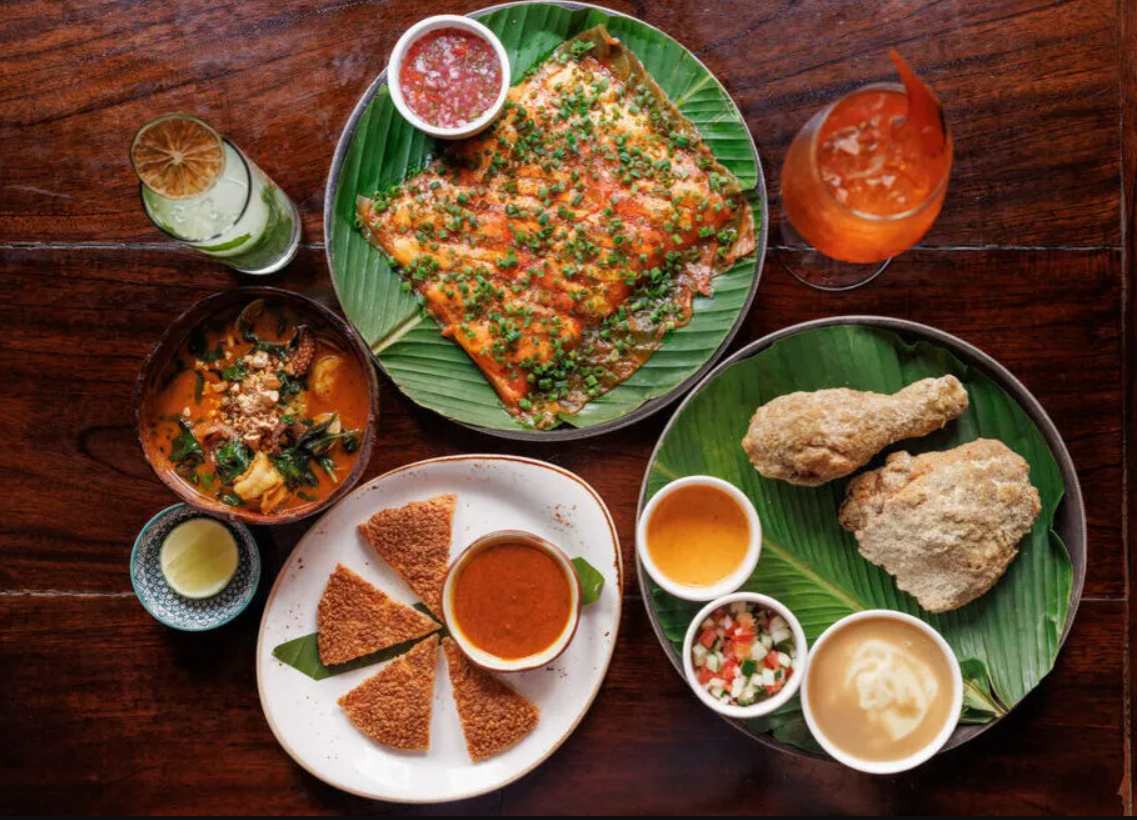
Rooted in traditional traditions, Panama’s epicurean heritage is multi-layered with arrivals from Spanish colonists, enslaved people from Africa, Chinese railway workers, and French, West Indian, European, and American who worked on the construction of the Panama Canal. This exchange of materials and culture has increased over time, and today the gastronomy of this Central American country has become uniquely Panamanian.
ALSO READ: Valhalla Season 3 Release Date: When Will The New Season Release?
Panama City for gastronomic purposes

As one of UNESCO’s Creative Cities of Gastronomy, Panama City reflects this popularity in its restaurants and bars, long-standing establishments and traditional vendors. The capital has become popular with young talented chefs for modern twists on traditional dishes.
ALSO READ: Will Dutton Die In ‘Yellowstone’ Season 5? cole hauser said this
Among them is Chef Ariel Zebede, who works in Panama City from A to Z, complete with an immersive multi-course chef’s table tasting menu. Zebede combines his Panamanian upbringing with time in restaurants in New York City and Los Angeles to showcase his artistic cooking. Panamanian specialties come with twists like almojabanos, roasted corn, and cheese curds.

Like José Olmedo Carles Rojas, executive chef at Fonda Lo Que Hay in Casco Viejo and La Barca y Los Náufragos at Eco Venao in Playa Venao.
Carles’ Fonda Lo Que Hay spins up Panamanian cuisine with a menu of sharing dishes. For starters, Concolon Sexy adds a fun name to this crispy fried rice dish, along with a tangy tomato sauce. Their dessert options may include raspao, a selection of fruit wine flavors, and an ice cream treat with condensed milk.
ALSO READ: Yellowstone Season 5 Episode 9 Return Date: An Important Time to Watch
Carles points to Panama City restaurants such as Maito and El Trapiche as influences, as well as hosting chefs considered Panamanian culinary pioneers. A restaurant owner in Panama described the chef Cuquita Arias de Calvo as “queen of modern Panamanian cuisine”. Cookbook author and hotelier Charlie Collins is also seen as an epicurean ambassador.
Promoting Panamanian gastronomy

Charlie Collins, chef and owner of Hotel Panamonte in Boquete, Chiriqui highlands of Panama, is the author of the culinary anthology T’Ach: The Kitchen of the Real Panama. In it, Collins travels his country, capturing the essence of the region and Panamanian recipes in its pages. He explained that local culture contributed to local fruits and root vegetables that still play an important role in our cuisine.

Patricia Miranda-Allen is the chef and owner of Cerro Brujo Gourmet in Volcano. Opened since 1999, Miranda-Allen works with sustainable gastronomy and cooks with local vegetables from many local farms. It provides pork, chicken, and lamb, as well as a low-quality source of trout. Instead of a printed menu, the order of the day is written on the board.
ALSO READ: Two Yellowstone Stars React To Season 5 Ending And Costner Drama Rumors
Drink Panamanian coffee

Panamanian coffee plantations also occur in the highlands of Chirique. This province marks the highest point in the country and the rich volcanic soil and favorable temperature make it ideal for growing this crop. The most popular variety is Geisha, an Arabica bean that originated in Ethiopia and was imported to Panama and is known for its sweet floral notes.
Many coffee farms in the highlands offer group tours; A visit to Panama’s website reveals information about many of them. This includes Boquete Tree Trek, a mountain resort that includes not only a Geisha coffee tour, but also nature walks on site.

At its factory, Cruce Coffee Company roasts and packages ground coffee into K-aluminum cups. The company sources its beans from three farms in the highlands of Chiriqui: Buquet, Volcano and Renacimiento. The staff at Cruce Coffee also lead workshops such as the Panama Coffee Experience, which explores the flavors associated with beans and roasts. After that, order a drink from the coffee bar.
Try the chocolate made in Panama

Panama also produces cacao for chocolate, which is grown in areas such as Bocas del Toro. You can buy confections made in Panama at candy and chocolate shops.
ALSO READ: The Great Season 3: When does the new season Release on Hulu?
Located in Panama City and named after a local chef, Nome Chocolate Factory serves a solid “bean bar” class in its kitchen. The staff at this Panamanian artisan chocolate maker shows you every step of the way in making custom candy bars and colorful flavored ribbons.
Culinary influence of Afro-Panamanian culture

Along with other nationalities that have enriched Panamanian cooking, Afro-Panamanian heritage remains a key ingredient. The term “Afro-Panamanian” refers to those of African descent and is linked to two categories. “Afro-Colonials” refers to those who descended from the enslaved peoples brought over during Panama’s colonial period. “Afro-Antilleans” relates to those who migrated from the Caribbean to Panama as laborers on the Panama Canal and other construction projects. In the present day, Afro-Panamanian culture thrives in particular in Colón, a Caribbean province.
Caribbean flavors and ingredients, including fresh seafood, are a major part of Afro-Panamanian cuisine. At El Bongo in Colón, customers can order specialties ranging from octopus ceviche to fried fish with coconut rice. Try the Cazuela de mariscos, a seafood stew prepared with coconut milk.
Connecting with Indigenous cooking

Panama’s Indigenous communities have also contributed to the foundations of Panamanian cuisine. Some groups are open to tourism-related visits and introduce aspects of their culture, such as sharing a traditional meal.
In Rio Caña, travelers can schedule a visit with the Ngäbe-Buglé people, and prepare dishes alongside the women of the village, who are this community’s expert cooks. The diet of the Ngäbe-Buglé people includes fresh-caught fish, self-harvested root vegetables and other ingredients such as “dachín,” an endemic leafy vegetable used in pastes and salads. A visit can be booked via SOSTUR, Panama’s community tourism network.

